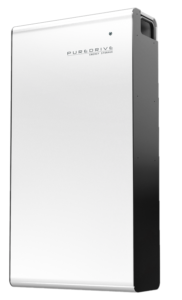
As the cold weather is creeping in and electric vehicles are becoming more popular, let’s take a look at how you can increase range and keep yourself safe with the top 10 tips for electric vehicle owners this winter.
Table of Contents

1: Precondition the battery

2: Check your Tyres
Tyres can lose 1 pound per square inch every time the outdoor temperature decreases by 10 degrees. That’s why air pressure needs to be a priority. Also check the tyre tread and if you can, equip your EV with winter tyres. Keep a tyre inflator handy, so you can check your car’s tyre pressure.
It should be obvious when there’s a leak, as your dashboard will show when the tyres aren’t holding enough air. Be sure to fill them with the recommended amount of pressure. Installing winter tyres automatically implies higher energy consumption. This is due to increased grip because the tyres are made with special compounds that maintain elasticity and flexibility in more severe winter weather conditions. It’s a good idea to change these tyres as soon as the weather gets warmer.
The compounds used for all-season tyres make them less soft than winter tyres, but suppler than summer tyres. They therefore represent a practical, all-purpose alternative, although they cannot be used in some extreme conditions. It is very difficult to give precise figures as to energy consumption for each type of tyre. It depends on the vehicle and the make of tyre. Just bear in mind that all-season tyres lead to a slight increase in energy consumption, and winter tyres push that figure up a little more.

3: Charge Smart

4: Use a garage, where possible

5: Eco driving mode
The eco mode for each Electric Vehicle varies, but they all accomplish a similar goal of boosting mileage through reduced power consumption by limiting the energy supply to the drive motor and cabin heaters. This can help maximize the battery efficiency during cold weather.
Plus, most EVs accelerate slightly slower in eco mode, since power is reduced to the motor. This can make your driving safer by limiting the chances of wheel spins on ice- or snow-covered roads.
The key to eco-driving is a smooth style. This form of driving, primarily focused on preserving your battery, is a must in winter. Avoiding abrupt starts and stops preserves your car’s battery and minimizes the risk of slipping on road surfaces that are often wet and sometimes icy. This winter, don’t worry about hitting the road… just drive gently!

6: Expect Less Range

7: Moderate Heating
You should expect to see a drop in range when driving your electric vehicle in winter. They may only go about half as far than usual before requiring a charge. Many of today’s EVs can get up to around 200 miles before they need to be charged. It’s smart to prepare for half that capacity during colder weather.
Turning the heat up too much or keeping it running for too long is the number one battery drainer in winter and can decrease your electric vehicle’s range by up to 30%. To consume less energy while driving, turn on heated seats and heated steering wheel and turn down the HVAC System.

8: Know where your fast chargers are

9: Drive at a moderate speed
At higher speeds, an electric motor consumes more energy than at lower speeds. A lot of energy can be saved by driving at a moderate speed. As an example: the difference in energy consumption between 65 mph or 70 mph can easily increase to 20%.
Also use the cruise control as much as possible. An motor uses the least energy if the car it is driven at a constant speed. The cruise control is the perfect tool for this.
10: Emergency Package
If you are traveling on longer journeys it is advised to keep your phone charged up and take an emergency kit with you, If you break down, you’ll need to get out of the car to stay safe
Here is a checklist to help you:
Extra clothes and waterproofs
Blanket
Shoes with good grip
A flask of hot drink
Food & Snacks
Hi-vis jacket
Warning triangle
Snow shovel
Torch
First Aid Kit
Tow Rope
Tyre Inflator
You should not travel with excessive items in your electric vehicle as the extra weight will have an impact on range, it would be a good idea to take this into consideration when purchasing the emergency kit.








